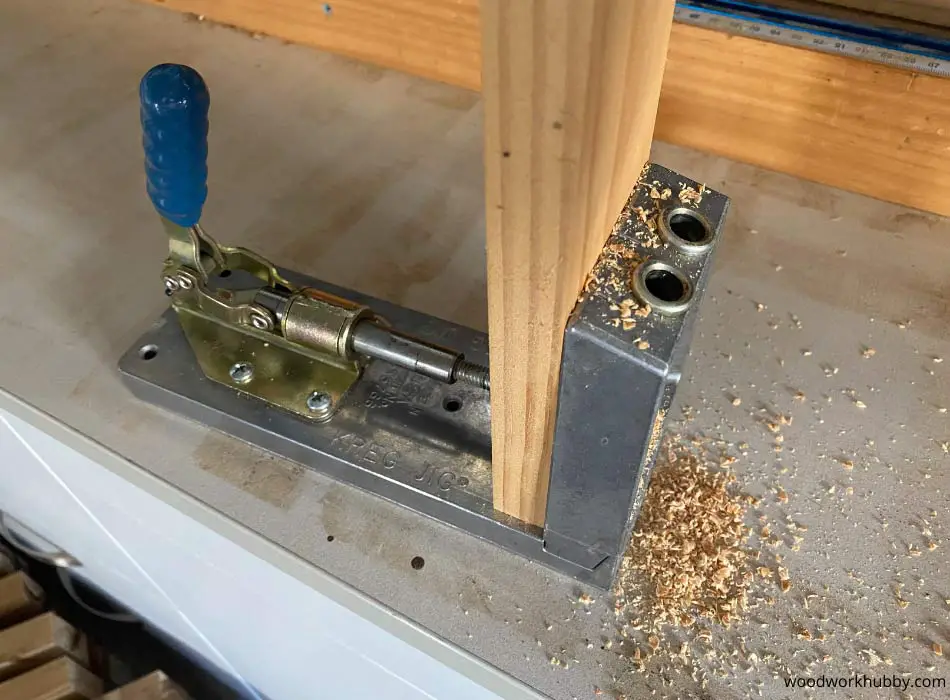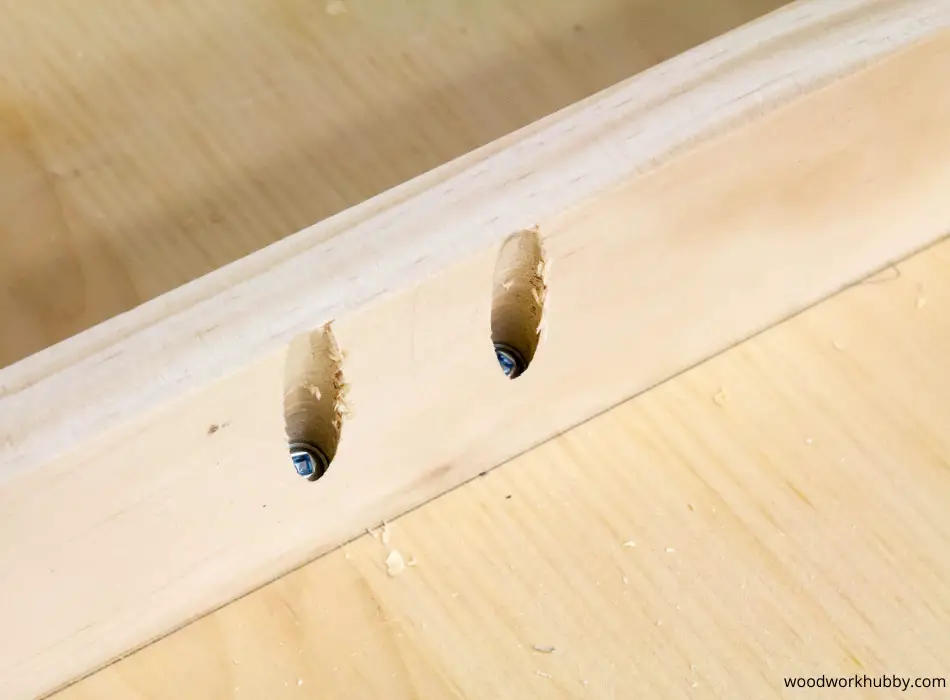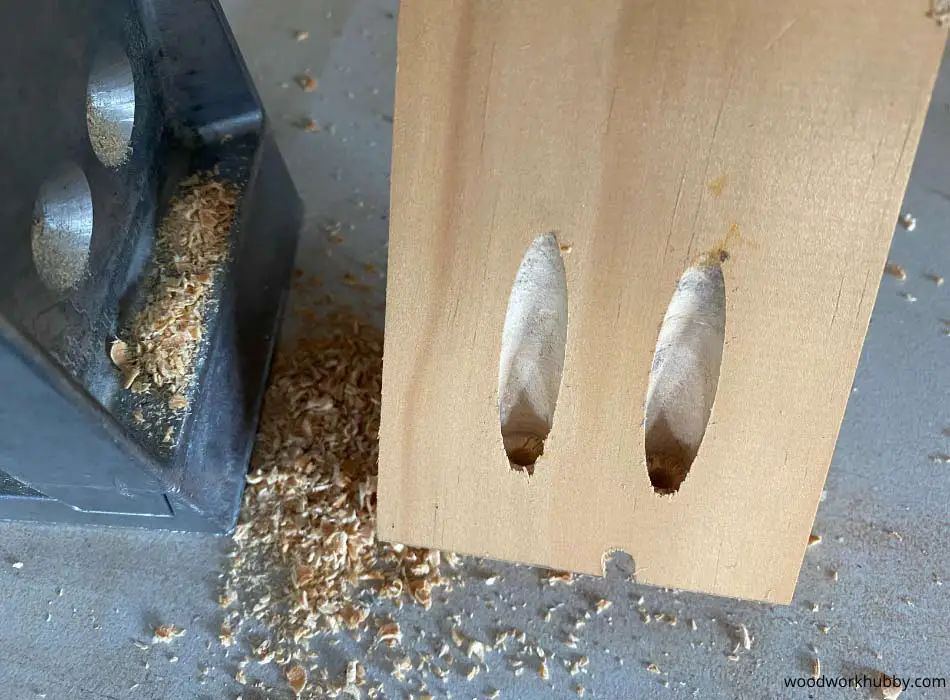Over the last several years I have seen a huge increase in the number of woodworkers using pocket holes to join wood together rather than traditional jointing methods. I even noticed my local woodwork supplies store has a whole shelf just for Kreg and pocket holes.
I have seen many traditional woodworkers so bad things about pocket holes. Why do woodworkers hate pocket holes?
In general, traditional woodworkers dislike pocket holes because of their deemed lack of strength and unattractive nature. Pocket holes are worth it for projects helmed by semi-professionals and hobbyists because they allow relative novices to easily join two units of wood together with ease.
In this article, I will look at when one should use pocket holes, whether this type of joinery is any good at all, and if their assumed joint weakness is a myth. Towards the end of this post, you’ll discover what the strength of this type of joint is and what you can do to make them stronger.
When Should You Not Use Pocket Holes?

You should not use pocket holes where the joints have to carry significant weight or where they can be prominent. These joints are easy to anchor but cannot carry a lot of weight and aren’t the best to look at.
Be sure to check out my article, can you use pocket holes for framing?
Below are three specific instances in which you should not use pocket holes.
When one of the wood surfaces is thin.
Since pocket hole joinery involves creating an angular hole, a thin piece of wood is not the ideal candidate for such a technique. A nail can punch through the pocket hole and become visible, which ruins the aesthetic appeal of the project.
More importantly, the presence of a thin surface in a project indicates its relative vulnerability. If the aforementioned surface plays a supportive role in upholding the structure, a joinery technique that’s well-known for being relatively weak is self-evidently not the right fit.
When the project is a large furniture item
Using pocket hole joinery for tables is not great since tables are prone to racking over long periods. If your project is of significant size and functions to support weight, it should not be supported by pocket hole joinery alone.
That doesn’t mean pocket hole joinery is of no use in such projects, it just means that it should not be pivotal to tables and large furniture items. Pieces joined by a pocket hole joint start to buckle under the considerable weight. Cracks can appear and the piece can get dislodged.
Can you use pocket holes on MDF? This is a common question I get asked. Check out the article to see my answer.
Where they will be visible
Finally, you must avoid pocket hole joinery where it is visible. While taste can be subjective, most people do not find pocket hole joints to be visually pleasing. Moreover, such joints have firm connotations with amateur woodworking.
This is what pocket holes generally look like.

If you don’t want to display that you’ve connected wood using the stencil equivalent of woodworking, you should apply pocket hole joints exclusively where they cannot be seen.
Is Pocket Hole Joinery Any Good?
Pocket hole joinery is good for small projects where joints will be hidden and strength is not of utmost importance. They certainly have their time and place and should not be disregarded.
Couple that with the ease with which you can anchor these joints, and you have a compelling argument for why pocket hole joinery can even be better than other types of joinery for some projects. Usually, it is the misuse of such joints that leads to their poor reputation.
Pocket holes aren’t meant to withstand as much pressure as other types of joints such as mortise and tenons.

I often get asked if you can use pocket holes on melamine? See my response here.
Are Pocket Holes Weak?
Pocket holes are weaker than mortise and tenon, and dowel joints. This is due to the angle at which the pocket hole is anchored. The nail or screw that goes through the pocket hole doesn’t have enough leverage to hold wood stable especially when pushed along the grain.
As a result, pocket holes can be functional within limits only. However, a lot of the hate that these joints receive has little to do with their limitations. There are two groups that dismiss and scandalize pocket hole joints.
The first is made up of people who ruined valuable wood because they used pocket hole joints where they weren’t supposed to be used.
Be Sure To Check Out My Other Handy Articles On Pocket Holes
Can you use pocket holes for framing?
Since you’re reading this post, you’ll know better where not to use a pocket hole joint and will hopefully not join the first group. The second group consists of advanced woodworkers who dislike how accessible woodworking has become.
Since pocket holes make woodworking easier, especially since the advent of pocket hole jigs, advanced craftsmen have started exaggerating how “weak” pocket holes are.
What Is The Strength Of Pocket Holes?
Pocket holes have the strength to hold anywhere between 706 lbs (320kg) and 1361 lbs (617kg). How much the joint can carry before giving in to the pressure has more to do with the thickness, integrity, and species of the wood it is screwed against and the angle at which it is lodged.
Pocket holes can be stronger than other joint types like mortise or tenon if the action is against the grain. But it is rarely the case that the action on a furniture item is 100% in one direction.
Watch this video that clearly shows the strength of pocket holes.
Video showing how strong pocket holes really are
Pocket holes are considered strong enough to hold together a structure that carries its own weight and doesn’t have outside forces moving things out of balance.
Does Glue Make Pocket Holes Stronger?
Glue makes pocket holes stronger by reducing the fractional movement that dislodges a pocket hole screw. The stronger the glue the firmer a pocket hole joint can be, which is why it is advisable to apply a layer or woodworking glue whenever you anchor a pocket hole joint on a high-functioning piece.
Be careful here as wood glue is not great for sticking to the end grain of the wood. Wood glue will certainly improve if not double the joint strength though.
I would recommend using some Titebond 3 in pocket hole joints!
If the pocket hole joint is being screwed into a lightweight frame, then there is no need to waste glue as the joint is strong enough to hold the structure together. In any other case, if you have the glue, you should use it to prevent loss of traction with time.
Final Thoughts – Why Do Woodworkers Hate Pocket Holes?
Pocket holes are hated because they make woodworking easy for amateurs. But because amateurs use these joints, they are often not lodged properly and fall apart.
As a result, pocket hole screw joints get a negative reputation they do not deserve. As long as you use them for lightweight projects and use glue to hedge against traction loss, your project should be fine.



